Does Blending Destroy Nutrients & Fiber?
Does blending destroy nutrients? Some folks claim blending blending fruits and veggies (like in a smoothie or blended soup) lowers fiber and other nutrients. But is it true? Honestly no, but you don’t have to take my word for it. As a registered dietitian, I’m going to share studies and scientific sources below, so if you like smoothies you can feel confident that they’re an asset to your health.
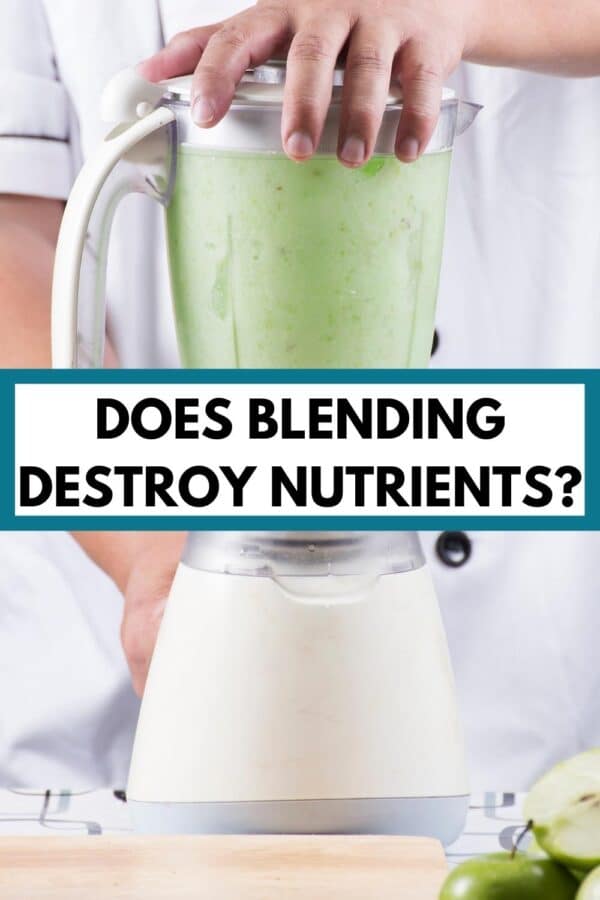
What are Nutrients?
So we’re all on the same page, lets chat nutrients real quick.
What are nutrients?
Nutrients are essential to the growth and maintenance of life. There are six nutrient categories:
- Carbohydrates
- Protein
- Fat
- Vitamins
- Minerals
- Water
You may hear folks talk about macronutrients (or “macros”) — these provide energy (calories) to our bodies and consist of carbohydrates, protein, and fat.
On the other hand, micronutrients (vitamins and minerals) do not provide energy directly, but are essential in every bodily process (include metabolizing).
Also important to this conversation is fiber. Fiber is a type of carbohydrate, but unlike carbs that are broken down into digestible sugar molecules, fiber is unable to be digested. Because of this, it passes through your GI system intact (yes, this is why you may have seen corn kernels in your poop before).
Does Blending Destroy Nutrients?
So, does blending destroy nutrients? In short, maybe a small amount, but nothing to be concerned over.
Typically when someone is saying that blending destroys nutrients, they’re usually trying to tell you that blending causes increased oxidation of fruits and veggies, which causes nutrient loss (think of cutting an apple and how the cut surface browns – this is enzymatic browning, a type of oxidation reaction).
While technically this is true, the nutrient loss is not dramatic. Let’s unpack it.
First of all, not all nutrients are antioxidants. So nutrient loss through oxidation is a non-issue with nutrients that aren’t antioxidants, like B vitamins and fiber (more on fiber later).
And for nutrients that are antioxidants, like vitamin C, vitamin E, copper, zinc, and selenium, nutrient loss through oxidation takes time (according to the Produce for Better Health Foundation).
Nutrient loss is inevitable with food. Per the University of California, Davis, the moment a fruit or vegetable is picked, nutrient loss starts. Add in the time it takes for the food to get from plant/ tree to your plate, and you’ve added a little more nutrient loss. Any sort of preparation, like cooking, peeling, chopping for a salad – it will all involve nutrient loss.
BUT!!! It’s all on a minor scale.
The net nutritional effect of drinking a smoothie is still positive.
In fact, one study found that consuming a 250-gram smoothie serving played a key role in helping different population groups achieve recommended daily nutrient intakes for vitamin C, minerals, and dietary fiber, minerals.
But let’s talk a bit more about fiber.
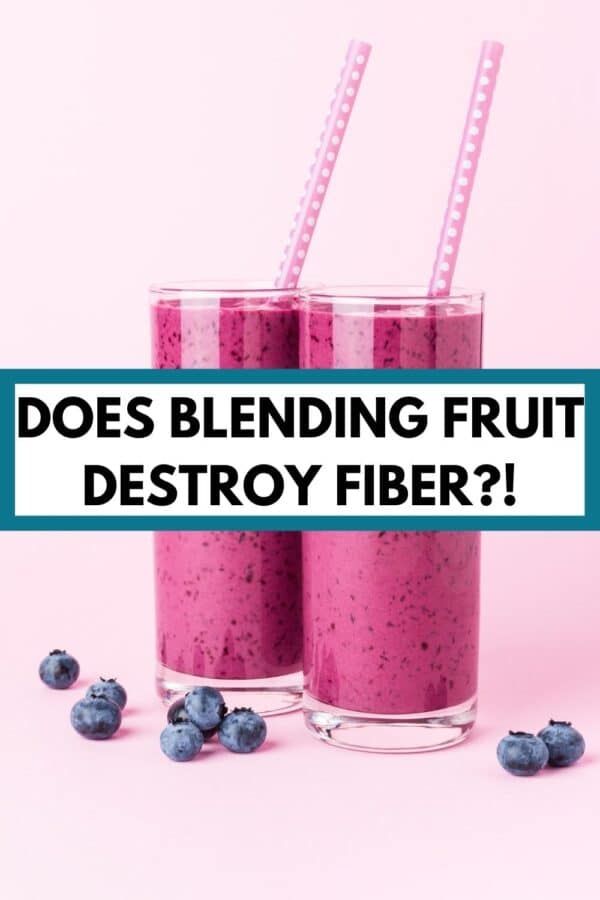
Does Blending Fruit Destroy Fiber?
Like mentioned above, fiber passes through your GI system intact. Which means it stands up to your teeth, molars, saliva, digestive enzymes, stomach acid, etc. And it remains unchanged.
So is a minute spin in a blender is going to destroy it?
Nope.
Again, you don’t have to take my word for it because we do have some research that backs up fiber remaining in smoothies.
Do Smoothies Have Fiber?
Smoothies absolutely have fiber!
One study found cell walls are preserved during smoothie processing and retained during digestion.
Another study found fiber material was still present in the smoothies after processing.
Some of my favorite high fiber smoothies include my strawberry blackberry banana smoothie, orange strawberry squash smoothie, and chocolate veggie smoothie.
How to Add Fiber to Smoothies
Because fiber does remain intact during making and digesting smoothies, a smoothie can be a convenient way to help you meet your daily recommended fiber intake.
If you want to add fiber to your smoothies, try including high fiber foods, such as:
- Fruits
- Vegetables
- Legumes
- Whole Grains
- Nuts
- Seeds
For a more comprehensive list and high fiber smoothie recipe inspiration, check out my article on High Fiber Smoothies – the Ultimate Guide.
Blending Benefits
So we’ve established that there really isn’t any legitimate concern to the claim that blending destroys nutrients, but are there benefits to blending?
Absolutely.
One study found that when offering smoothies, the fraction of students eating a full serving of fruit increased from 4.3% to 45.1%. They even concluded that it’d be beneficial for school districts to consider offering fruit smoothies to increase fruit consumption at schools.
And there was that other study we already mentioned that found smoothie intake helped different population groups achieve various recommended daily nutrient intakes.
Plus, to blanket say “blending is bad” or “blending destroys nutrients” is truly a bit of an elitist statement with roots in healthism and ableism. Many folks for many reasons may prefer or have to rely on blended foods like smoothies and pureed soups to help meet their nutrient needs – and that’s perfectly acceptable.
With the CDC finding that 87.7% and 90% of American adults don’t meet fruit and vegetable intake recommendations (respectively), there is zero reason to be discouraging fruit and vegetable intake in any form – including smoothies/ blended.
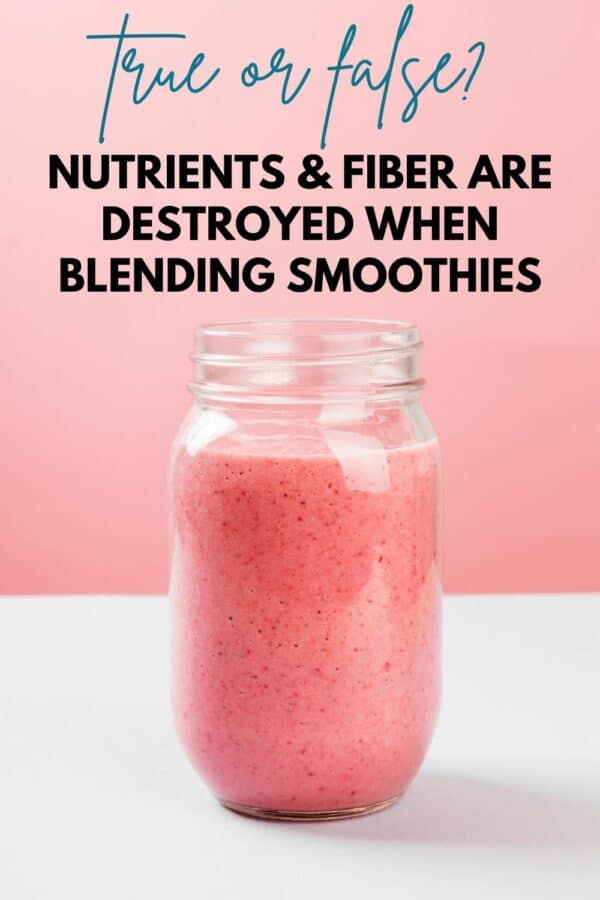
Final Thoughts
Small amounts of nutrient loss are inevitable with literally any food and any way of eating.
Does blending destroy nutrients? A very insignificant amount. There is still an overall net beneficial nutrient and health advantage to consuming smoothies.
Does blending fruit destroy fiber? No, and we have studies to prove that fiber content remains intact from the time you make the smoothie to it’s fully digested.
TL;DR: If making smoothies or blending fruits and vegetables in any other form feels good to you, keep it up. There is no significant nutrient loss, and in fact you truly may be positively impacting your overall nutrition and health.
Still reading? Come join me on Instagram and let me know what you think of this article answering, “Does Blending Destroy Nutrients & Fiber?”

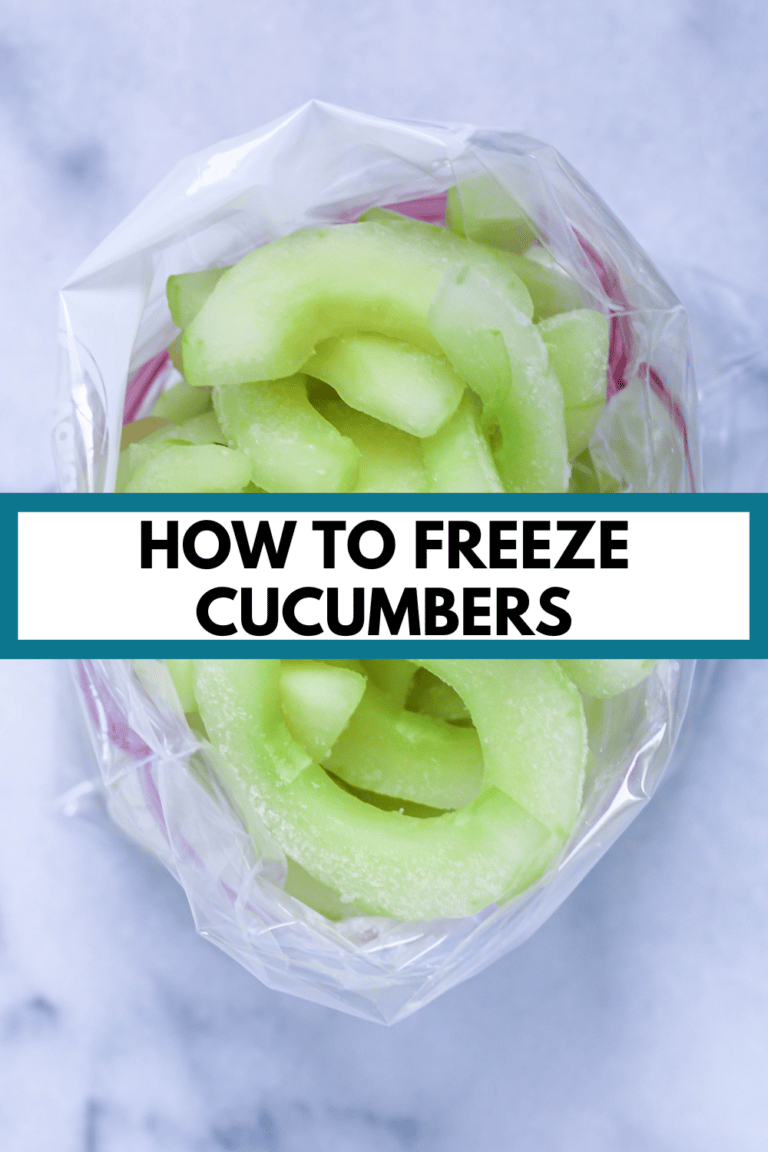
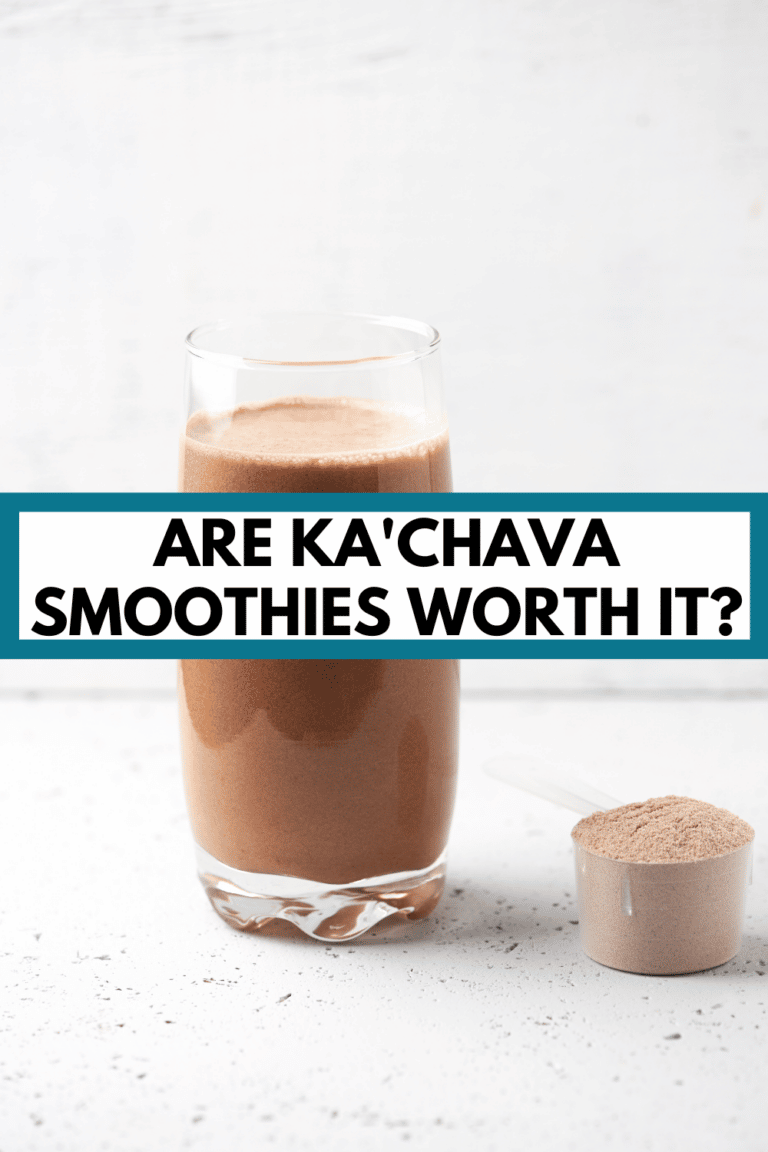
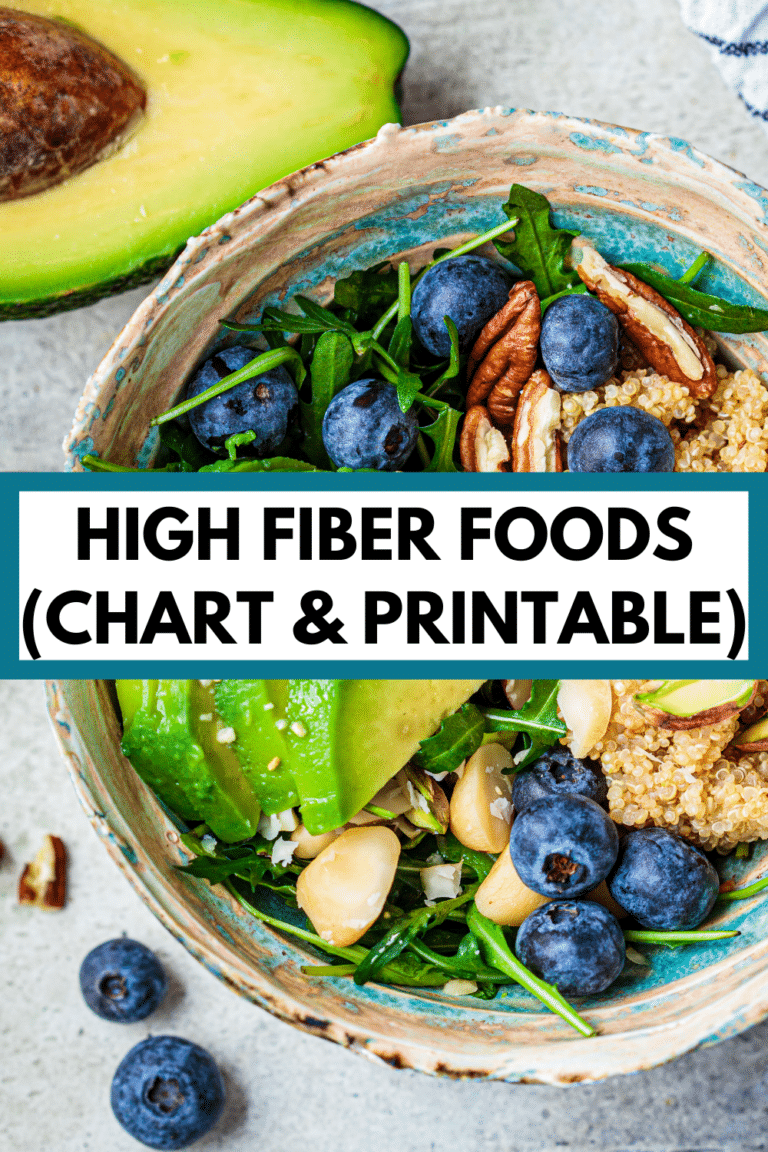
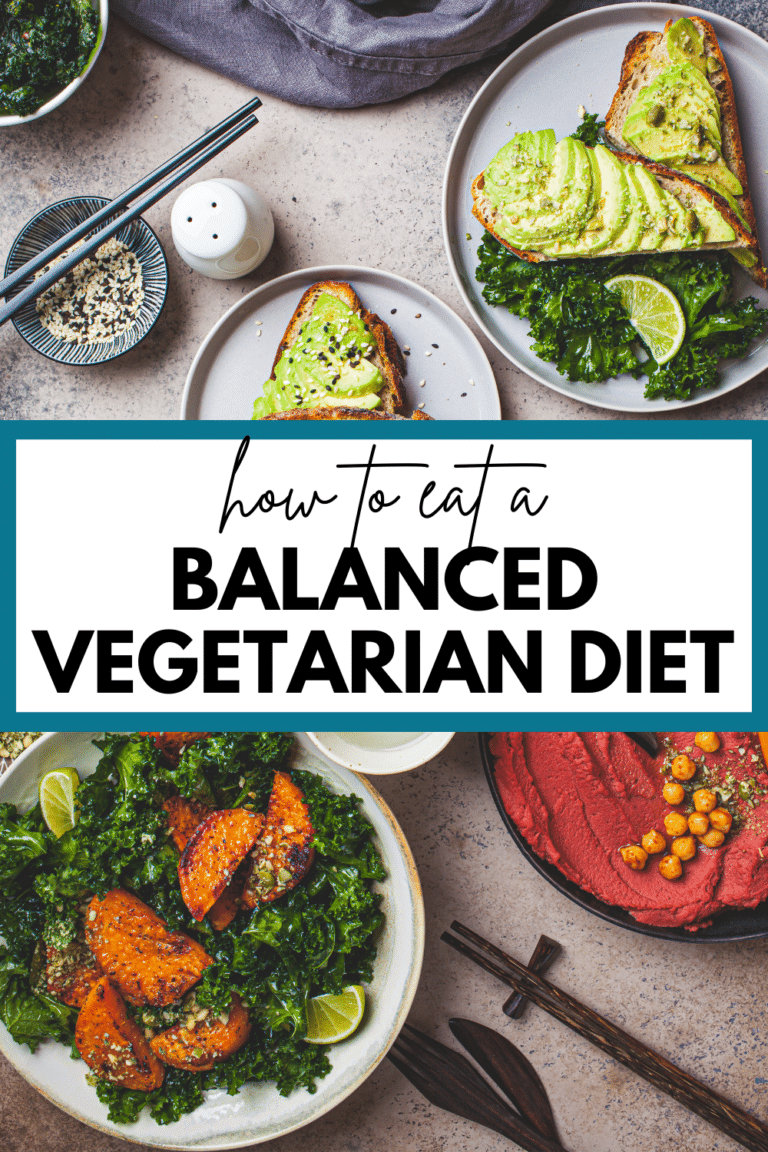
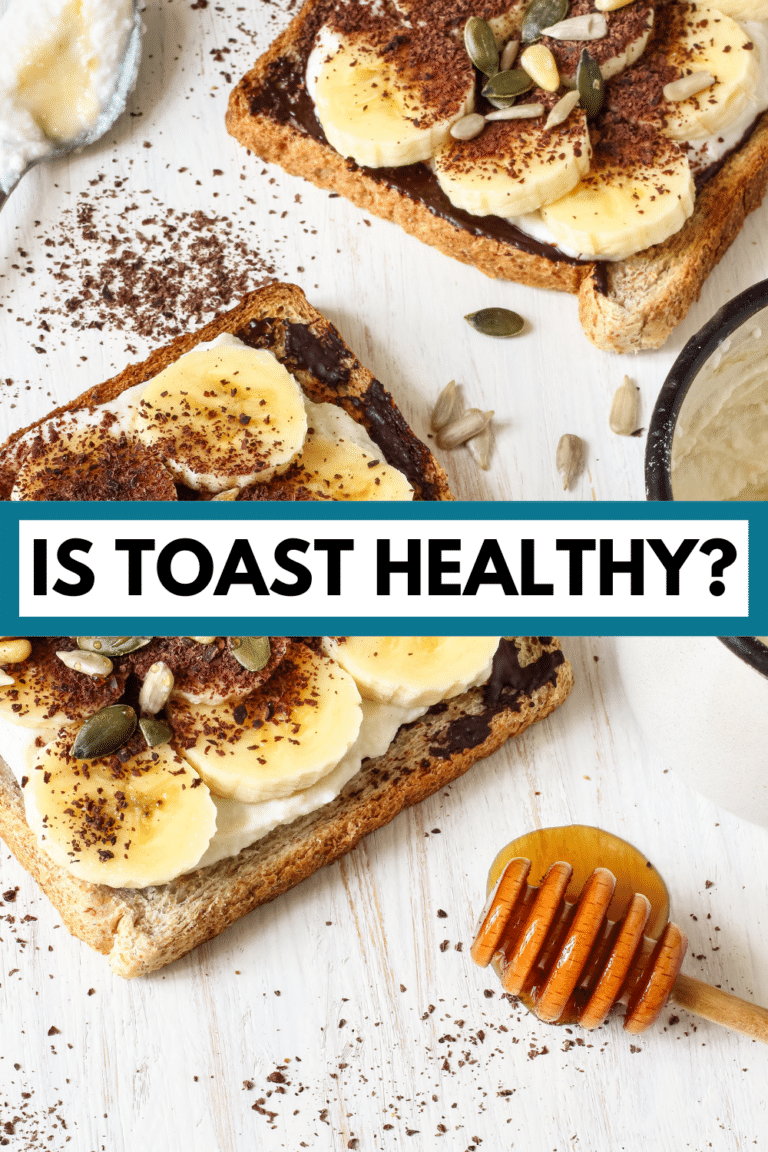
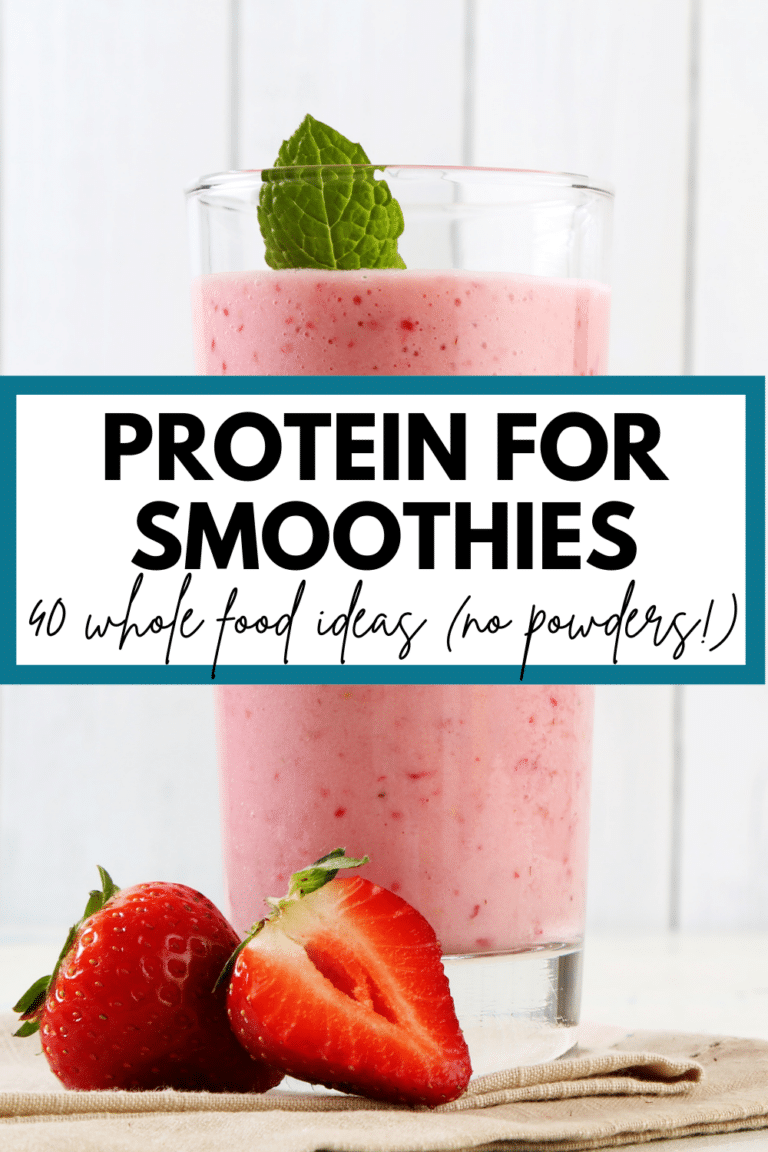
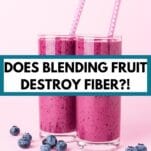
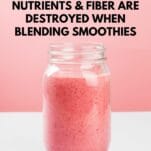
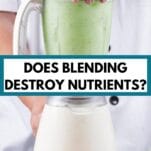
Excellent article with great the info I need to keep my smoothie habit!
Thank you:)
You’re welcome, so glad you found it helpful!
Great article, thanks! I have not heard that it affected nutrition, rather that smoothie vs eating fruit whole causes blood sugar to spike. Any information on that aspect?
So, per usual with nutrition, it depends. There are several studies (linked to in the article) showing that cell walls and fiber were still present in a smoothie after blending. That said, smoothies could lead to a bigger blood sugar spike if you’re also adding ingredients like fruit juice, honey, or sugar (like I know of a popular smoothie chain that adds 1/4 cup sugar to each smoothie!). But you could also easily add other ingredients with more protein, fat, and fiber to a smoothie that can lead to a lower blood sugar spike. These would be ingredients like Greek yogurt, protein powder, chia seeds, flax seeds, hemp seeds, peanut butter, leafy greens, non-starchy vegetables, etc.
This is excellent information, thank you! Do you have any thoughts on if it matters if the smoothie is made but not consumed right away? I have a friend that says to get the most nutrients the smoothie needs to be consumed immediately after blending, but I like to make one in the morning and have it later for lunch.
Great question! It’s true that there may be some trivial nutrient loss, but it’s insignificant in the big picture. The same can be said for any kind of produce processing. Like – the lettuce pre-chopped in a salad kit has been cut/ processed more and thus faces a very small amount of nutrient loss compared to a whole head of romaine lettuce available at the store. But that head of romaine lettuce has been chopped and in transportation and on the shelf for a little bit, and has been processed more and experienced some minor nutrient loss compared to the romaine growing in my backyard.
Some level of processing is always going to be necessary. In this smoothie example, you’re still going to get more nutrients in by consuming a fruit/ veggie smoothie made a few hours ago, compared to skipping it.
I’m grateful for the advice but “healthism” “ableism” can we please not with this kind of ridiculous awkward language in a nutrition article? Please be serious if talking about people’s health
I’m quite serious. While I don’t yet have my own articles on healthism and ableism, there are many articles available for you to learn more on these topics with a simple search online.
Hi, if you use a CGM to test (on the same person at comparable times of day, say before breakfast) eating an orange and drinking a glass of water vs the smoothie of an orange and a glass of water, you’ll see that the smoothie makes a glycemic peak far greater than the fruit. And if water is replaced by milk, I shudder to test since lactoserum makes insulin peak quite a lot all by itself. So, while the fiber content is there as they haven’t magically disappeared, they are so finely chopped that it doesn’t stop the sugars from being absorbed with the same speed as if they didn’t exist (to be tested, the previous vs. the juice of an orange diluted in a glass of water).
I personally am not an expert in nutrition nor do I own a CGM, but my insulin resistant body is a very accurate tester. And it says smoothies are only good if I add stuff we don’t normally eat raw, like kale or a tsp of matcha/raw cocoa/etc. Otherwise it’s tiredness and brainfog assured for the day instead of energy and focus.
P.S. Add smoothies for the kids in schools? No way. That’s the best way to “hide” fruit that tastes like cardboard and is laded with pesticides. Give them organic fruit they can actually taste, after the cantine meal.
Hi Oana. You bring up some valid points – and certainly the most valid being that you are the expert of your body and how you personally respond to different foods presented in different ways. This article was simply exploring the research on whether or not blending destroys fiber and vitamins, minerals, and other nutrients. A smoothie’s impact on blood sugar is an entirely different topic, and one with many variables. For example, in the orange & water vs blended orange drink example you mentioned, the blended drink would likely be consumed significantly faster than the time it takes to eat and chew an orange and drink a glass of water. That faster consumption would lead to a more immediate and higher blood glucose spike. Additionally, and by far one of the greatest variables, is personal differences, including medical conditions such as insulin resistance, which would absolutely cause a different response to an only-fruit smoothie compared to others of different ages, health conditions, etc. And just for the record, from a blood sugar perspective, as a dietitian, I’d never advise a fruit-only smoothie alone. I’d suggest consuming it alongside or blending in other higher fiber, fat, and protein ingredients – like enjoy the fruit smoothie alongside scrambled eggs, and maybe blend some kale and nuts/ seeds into the smoothie, too. Hope that helps a bit!
Thank you for an interesting clearly worded article. I have been drinking a smoothie right after my Early morning workout for years (2am>5am). I am 73 with
type 2 diabetes, my smoothie contains 6>8 strawberries, 2>3 stalks kale, 1 1/4 oz almonds, 8 oz
water, 3 oz almond milk and protein powder. No spikes.
Since everyone digests differently I suggest some experimenting with what works, and tastes right, for them. Thanks again, Robin
I was diagnosed 40 years ago with reactive hypoglycemia… meaning if my blood sugar rises too quickly, my pancreas secretes too much insulin and my blood sugar craters. I continue to be extremely sensitive to liquid sugars, so cannot drink any soft drinks or see-through (pulp less) fruit juices. My greatest sensitivity is in the morning, but my favorite day-starter is that well known multi-vegetable juice. A serving has 7 gms of sugar, but the (blended) fiber slows the metabolic process down such that my blood sugar does not spike. I do have to be more careful with blended fruits, since blending does break fiber into smaller pieces… and since fruit generally has more sugar, it gets metabolized more quickly… so I always add other healthy ingredients to dilute the sugar level (yogurt, protein powder, seeds, nuts, etc). My decades of personal experience has taught me that fruit fiber unmistakably remains after blending… but it does not slow the metabolic process down as much as the unblended fiber.